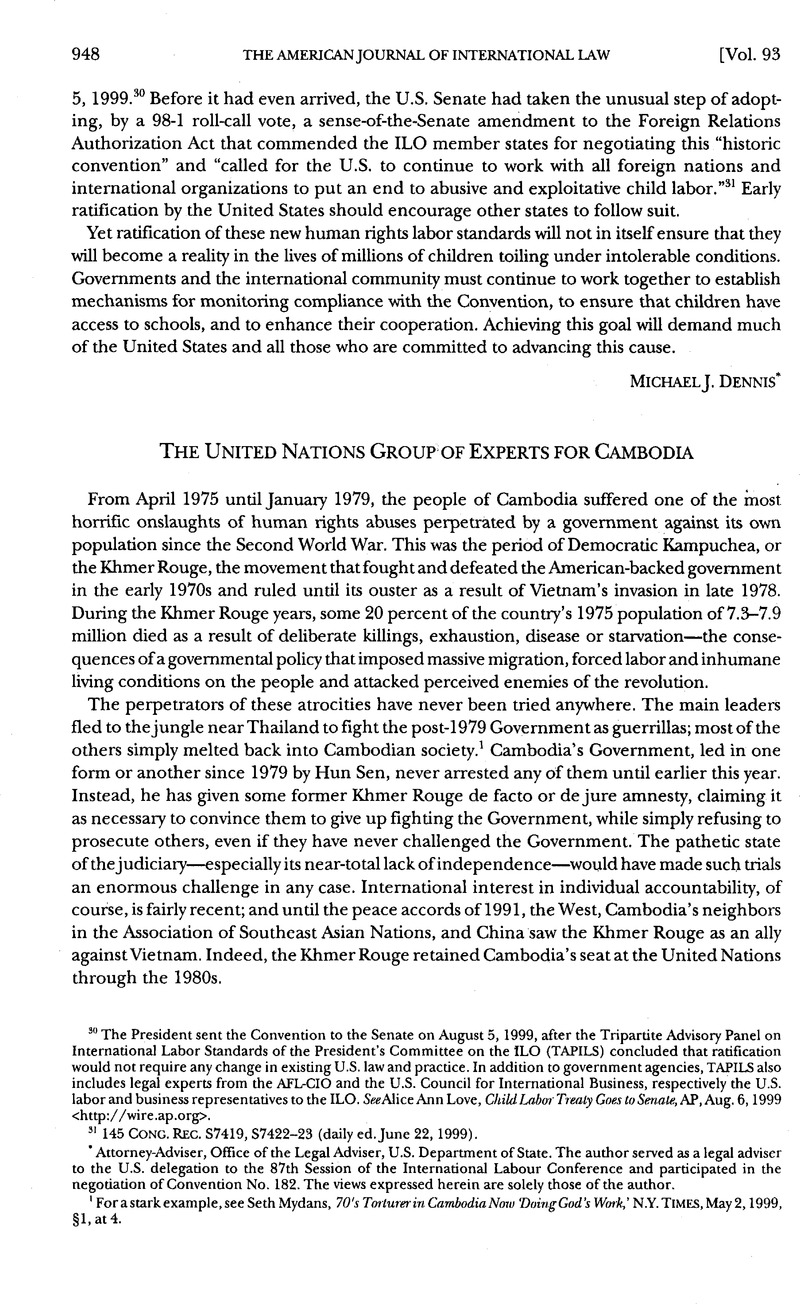Article contents
The United Nations Group of Experts for Cambodia
Published online by Cambridge University Press: 02 March 2017
Abstract

- Type
- Current Developments
- Information
- Copyright
- Copyright © American Society of International Law 1999
References
1 For a stark example, see Seth Mydans, 70’s Torturer in Cambodia Now ‘Doing God’s Work,’ N.Y. Times, May 2, 1999, §1, at 4.
2 GA Res. 52/135, UN GAOR, 52d Sess., Supp. No. 49, at 288, 289, UN Doc. A/52/49 (1997).
3 Analysis prepared on behalf of the Sub-Commission on Prevention of Discrimination and Protection of Minorities by its Chairman of materials submitted to it and the Commission on Human Rights under decision 9 (XXXIV) of the Commission on Human Rights, UN Doc. E/CN.4/1335 (1979). The full Commission ignored the, report in light of the ouster of the Khmer Rouge in January 1979.
4 Identical letters dated 15 March 1999 from the Secretary-General to the President of the General Assembly and the President of the Security Council, UN Doc. A/53/850-S/1999/231 [hereinafter SG’s Letter], annex [hereinafter Group of Experts Report].
5 Group of Experts Report, supra note 4, paras. 52–58.
6 Id., paras. 59–91.
7 Id., paras. 92–101.
8 Id., para. 110.
9 Id., paras. 131–38, 178–84, 190–92.
10 Id,, paras. 149–54.
11 Id., para. 171.
12 Id., para. 173.
13 Id., paras. 207–08.
14 See Elizabeth Becker, Cambodia Spurns U.N. Plan for Khmar Rouge Trial, N.Y. Times, Mar. 14, 1999, at A4.
15 SG’s Letter, supra note 4, at 3.
16 See Philip Shenon, U.N. Plans Joint War Crimes Tribunal for Khmer Rouge, N.Y. Times, Aug. 12, 1999, at A8.
17 See Cambodia prepared to go it alone with Khmer Rouge trial: Hun Sen., Agence France-Presse, Sept. 29, 1999, available in LEXIS, World Library, AFP File. As this issue went to press, the Cambodian Government was considering a U.S. proposal for a majority-Cambodian mixed tribunal set up under Cambodian law, in which conviction or acquittal would require at least one foreign judge to concur.
- 4
- Cited by


